Ottoman Era Chased Silver Panels Plate Wood Box Casket Footed Design
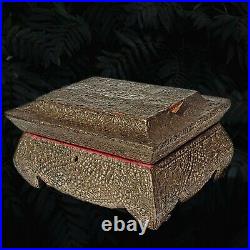
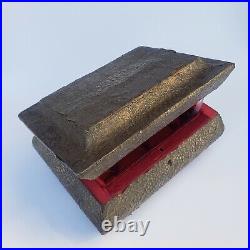
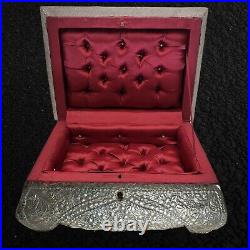
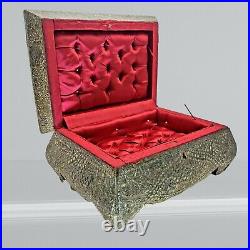
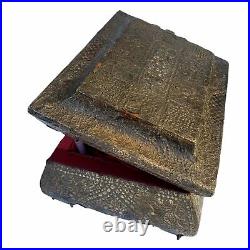
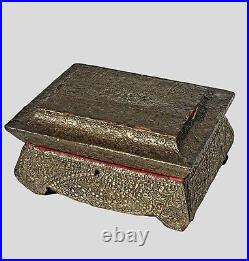

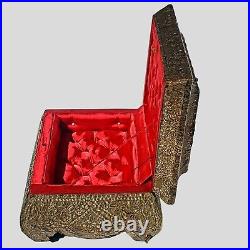

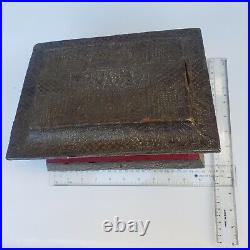
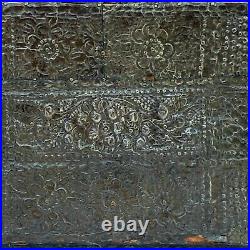
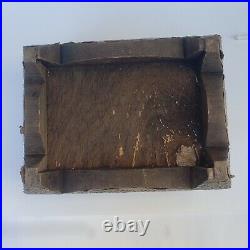

On offer is a very finely detailed casket/box bearing heavy influence on the Ottoman style. Similar silver plated wood caskets are on display in museums in Tunisia and the Middle East. This box looks to have been used for some precious document or the Quran. It is beautifully laid out within by red satin and tufted with pearl like pins. It also has a locking mechanism, but no key.
This elaborate wooden casket has a hinged lid and mounted with finely chased silver panels. The ornamentation on the remainder of the casket is meandering vines ending in radial flower heads and embossed buds. The silver has been tarnished over the years and has a light shimmering glow with a dull gold color. Small areas of the silver veneer are beginning to peel away, as can be seen in the pictures. Structurally the box is sturdy and opens and closes properly.It stands on four raised legs. In the 16th century, the Ottomans succeeded against their rivals, the Spanish, in controlling Tunisia and Algeria.
They established settlements along the coast of Tunisia, which received their inco? Me from the pirates operating in the Mediterranean. By the early 19th century, Ottoman control of the country had weakened and the Ottoman Empire only maintained a symbolic authority.
The impact and influence of the Ottoman Empire on the arts and culture of Tunisia has not been documented enough. This box is a rare and impressive example of Ottoman silver with a Tunisian influence. Measures around 11" in length, 7" in width and stands 6 high.